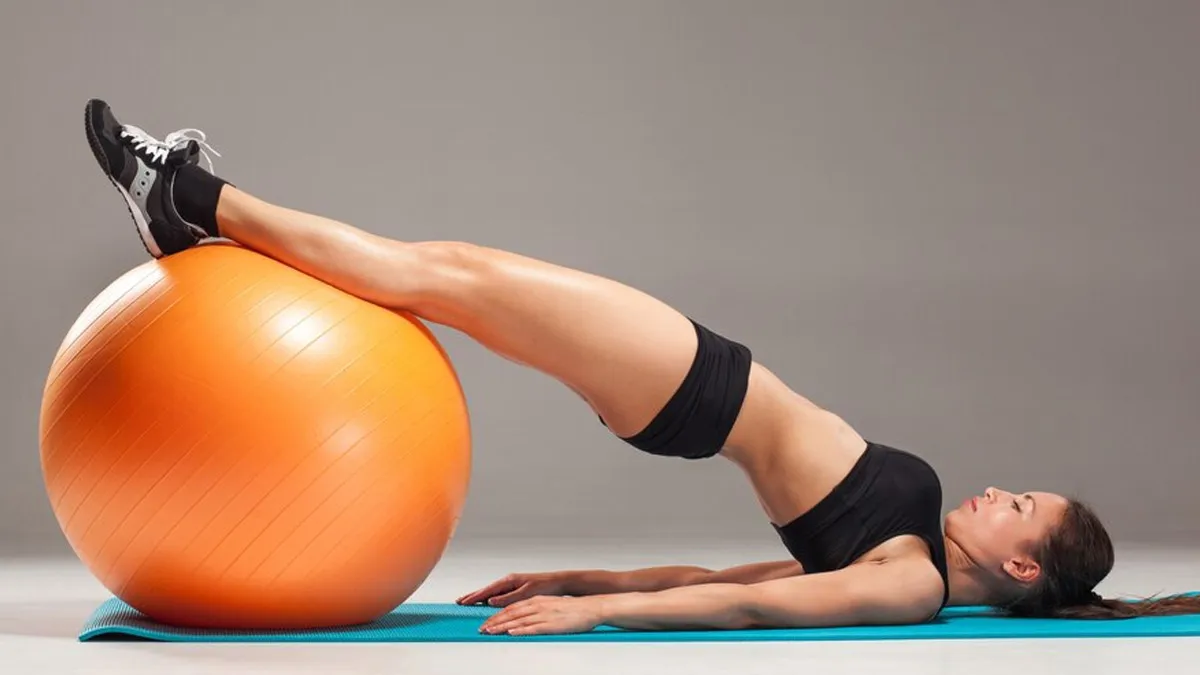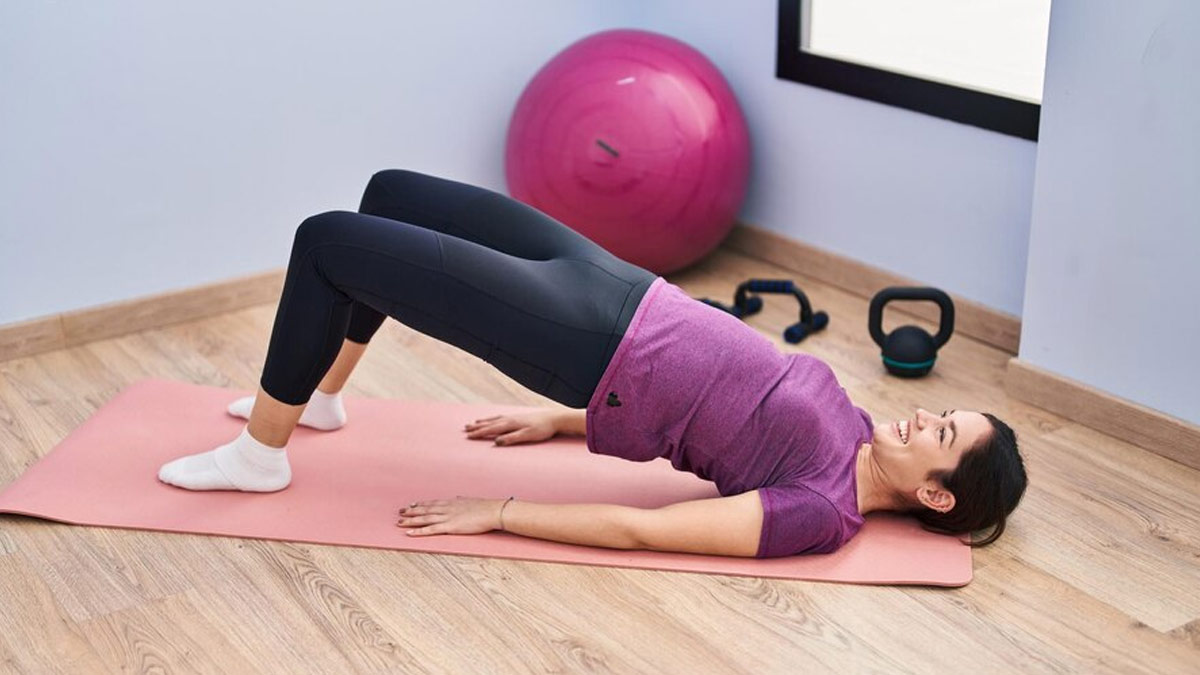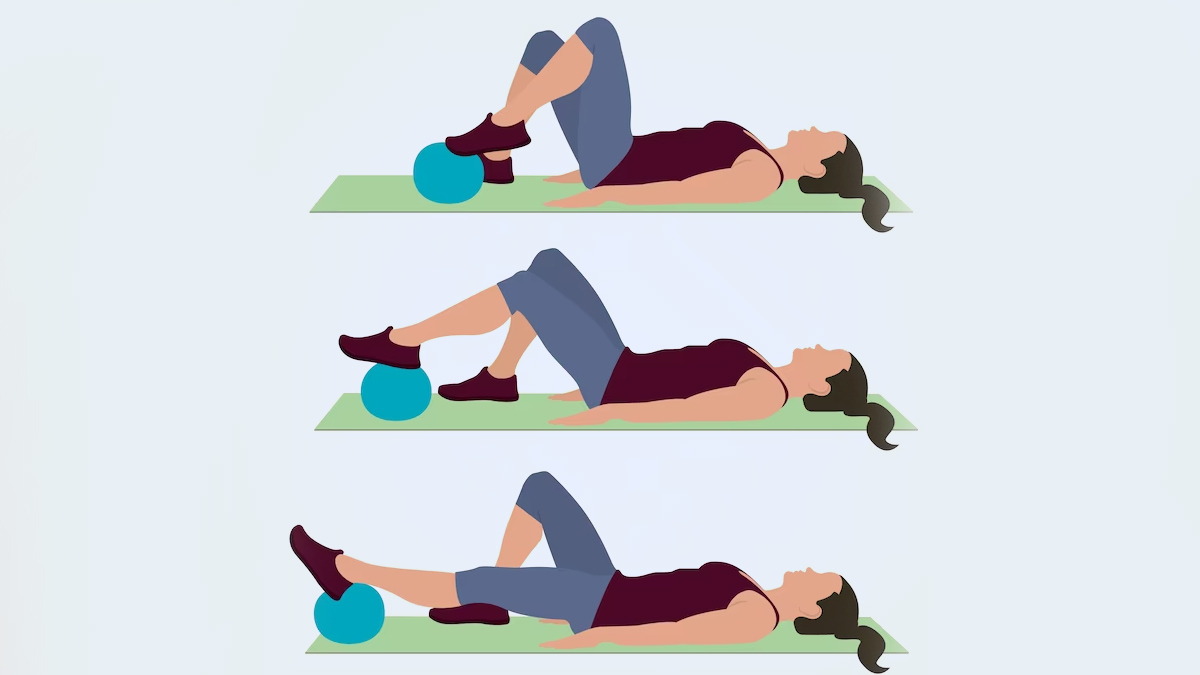
When we hear the words pelvic floor exercises, it instantly reminds us of either pregnancy or old age. However, doctors and physical therapists emphasise that these muscles are essential for all women, at all ages. The pelvic floor is like a hammock that supports your pelvis' bottom, managing your bladder and bowel, and stabilising the core. When it is strong, one feels secure and in charge, but when it’s too weak or too tight, problems start to occur.
Table of Content:-
We consulted with Shrey Kumar Srivastav, Senior Consultant and General Physician, Sharda Hospital - Noida, who stressed that it doesn't need to be difficult to strengthen these muscles. "It's a matter of adding simple, conscious movements to your daily life. It's an investment in confidence and long-term health that pays big dividends," he said.
Simple Pelvic Floor Exercises Every Woman Should Do
These are the five easy pelvic floor exercises Dr Srivastav suggested every woman should learn and perform:
1. The Basic Kegel (The Lift)
This is the basic exercise, but you have to do it the right way. Additionally, most people do it wrong since it is not about pinching your butt or inner thighs. Here’s what you need to know:
How to do it: Lie down flat and take it all in, as if you are holding back the urine flow when you're in the middle of urinating, and also holding back from passing gas. It should feel like a lift and a squeeze way deep inside the pelvic region. Breathe in, then when you breathe out, slowly lift the muscles. Hold for three to five seconds and then release slowly.
Reps: Do 10 repetitions, three times daily.
Also Read: Social Isolation Linked to Increased Risk of Heart Disease and Cognitive Decline | Tips To Stay Safe

2. The Quick Flick (The Power Squeeze)
The quick flick works up the fast-twitch muscle fibres, important for responding quickly, when you sneeze, laugh, or cough.
How to do it: Begin in a relaxed position, rapidly squeeze and lift your pelvic floor muscles in a sudden sneeze-like motion. Squeeze the muscles as hard as you can, then release them at once. Do not sustain the squeeze.
Reps: Repeat the fast squeeze and release 10 to 15 times, once daily.
3. The Elevator Ride (The Slow, Deep Hold)
This exercise helps in developing endurance and strength over time. Here’s what you need to know:
How to do it: Visualise your pelvis as an elevator with three floors. Contract the muscles slowly to the first floor (gentle squeeze). Next, contract a bit more to the second floor. Lastly, contract completely to the third floor. Hold at the third floor for five to 10 seconds. Slowly release down from the third floor, through the second, to the first, and then relax completely.
Reps: Do 5 times.
4. Deep Belly Breathing (The Relaxation)
A tense, stressed pelvic floor is every bit as bad as a weak one. This exercise is designed to release tension.
How to do it: Lie on your back with a small pillow under your knees. Put one hand on your chest and the other hand on your lower belly. Breathe in slowly through your nose, allowing your belly (and the hand on it) to rise without your chest moving. As you breathe out slowly through your mouth, allow your belly to release and drop. This natural movement allows the pelvic floor muscles to lengthen and release.
Reps: Two to three minutes of practice, with slow, deep breaths.

5. Bridge Pose (The Full Chain Connection)
This exercise works the glutes and core as well as the pelvic floor, to lock in the full posterior support system.
How to do it: Lie on your back with your feet flat on the floor, knees bent, hip-width apart. Breathe in. As you breathe out, push your feet down into the floor, contract your glutes, and very slowly lift your hips from the ground. At the highest point of the lift, do a light Kegel squeeze. Hold for 5 seconds, and then very slowly lower your hips all the way back down and release the squeeze.
Reps: 10 repetitions.
Bottomline
Dr Srivastav highlighted that consistency trumps intensity. "Think of these as part of your dental hygiene, something you do every day without fail. You won't see results overnight, but within a few weeks, you'll feel a difference in core stability and control."
If you find it painful, leaking, or difficult to find the muscles, consult your doctor or a physical therapist specialising in pelvic floors. They can give you individualised advice and make sure that you are doing the exercises in the correct manner.
Also watch this video
FAQ
Q1. How will I know if my pelvic floor is weak?
A: Typical symptoms are leaking urine on coughing, laughing, or sneezing (stress incontinence), or trouble holding on to gas, or a sensation of heaviness or bulging in the vagina.Q2. May I do these exercises standing or sitting?
A: Yes! While it's easiest to begin and learn the movement while lying down, you can do the Basic Kegel and Quick Flick anywhere; you can do them in your car, at your desk, or even while washing dishes.Q3. How long until I see results
A: If you practice the exercises regularly and consistently, you can usually sense a difference in muscle awareness and control 4 to 6 weeks later. Substantial gains in strength usually take three to six months.
How we keep this article up to date:
We work with experts and keep a close eye on the latest in health and wellness. Whenever there is a new research or helpful information, we update our articles with accurate and useful advice.
Current Version
Oct 01, 2025 13:46 IST
Modified By : Tanya SrivastavaOct 01, 2025 13:46 IST
Modified By : Tanya SrivastavaOct 01, 2025 13:46 IST
Published By : Tanya Srivastava